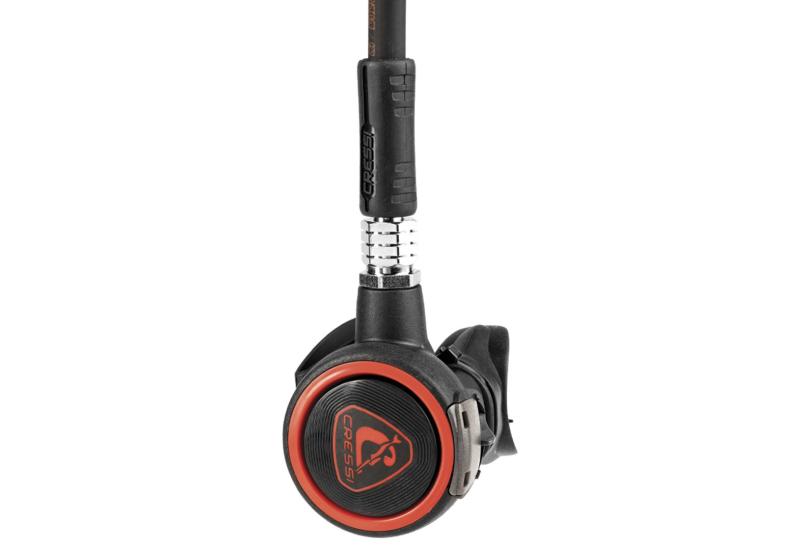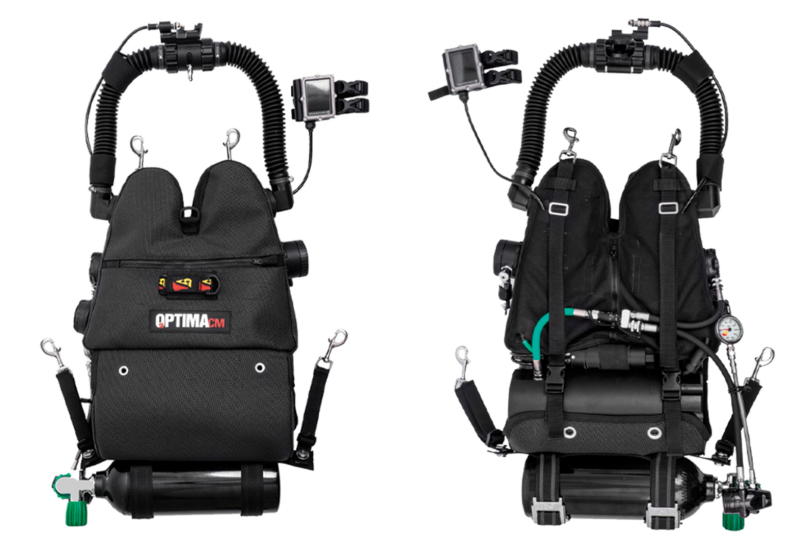Best New Regs 2003

November 2003
By John Brumm
Photography by Mitch Mandel
Regulators Reviewed in This Article
Aeris Atmos Pro Aeris Atmos Sport Apeks ATX100 & ATX40 Apollo Bio A-110 Moisturizing Reg Apollo Bio A-120 Atomic Aquatics B2 Dacor Eagle Dacor Eagle Pro DPD Dacor Eagle Sport Dive Rite RG2010 H2Odyssey Sprint XL
H2Odyssey Sprint XS Oceanic Delta 3/TDX5 Oceanic GT/CDX5 Oceanic O2 Tech Oceanic Omega 2/DX4 Oceanic Zeta/CDX5 Poseidon Xstream Dive Tusa RS240 Zeagle Envoy Zeagle Envoy Deluxe Zeagle ZX/DS-V
In July, we took 23 brand-new regulators to Panama City Beach, Fla., for three days of grueling tests on a state-of-the-art ANSTI breathing simulator. We recorded more than 1,750 data points in 72 hours, enough info to fill a three-ring binder four inches thick. Just two weeks later, six test divers took turns breathing off the same 23 regulators in the chilly water and 15-foot visibility off Catalina Island, Calif. A whopping 1,350 ergonomic data points were collected, along with pages and pages of test diver comments. This real-world data was analyzed alongside the simulator data to paint a complete picture and reveal the eight best breathers.
The "RMVs" that we refer to in these reviews are respiratory minute volumes, or breathing rates. We tested each regulator at three different RMVs to represent normal breathing, aggressive breathing and extremely heavy breathing. These breathing rates were then coupled with different test depths--132 feet, 165 feet and 198 feet. Each regulator was tested at each RMV at each depth.
Testers' Choice Regulators: Under $300

Zeagle Envoy| Zeagle Envoy
Zeagle's redesigned Envoy was the only reg in its price class to earn perfect simulator scores, even at the most demanding RMV/depth. It also delivered far and away the best in-water performance. An easy breather in all positions and extremely dry, the Envoy has a forceful purge and a dive/predive lever that is very effective in controlling surface free flows. The lever is also easier to use than most, even when wearing gloves, although its two settings are not clearly marked. Neither are the two high-pressure ports on the first stage; however, their positioning makes it possible to discern high-pressure from low-pressure ports without having to remove port plugs. While male testers found it comfortable, the rather long tongs on the Envoy's mouthpiece are uncomfortable for some women. Available with either a yoke or DIN valve. The Envoy offers the best warranty in its price group.
Testers' Choice Regulators: $300-$400

Dacor Eagle Pro DPD
Dacor's lightweight Eagle Pro DPD (for dive/predive) breathes like a dream on the simulator, earning very good to excellent scores at all RMV/depths. The balanced diaphragm first stage features Dynamic Flow Control (DFC), which provides consistent breathing performance at all depths. The main low-pressure port has a 170-degree swivel to simplify hose routing.
In real-world diving, the Eagle Pro DPD is easy to use. The second stage has a compact oblong shape with small purge button centered on the mesh-grid cover plate. The dive/predive switch couldn't be simpler. It has positive-click positions that are clearly marked so there's no question which mode you're in. The reg comes with a comfortable mouthpiece and dives dry. The purge isn't as forceful as some, however, and the narrow exhaust tee produces above-normal bubble interference when vertical.
Oceanic O2 Tech| Oceanic O2 Tech
Earning good to excellent simulator scores, Oceanic's O2 Tech--with its distinctive green and yellow second stage and DIN valve first stage--is designed specifically for mixed-gas diving. The reg uses a modified SP4 unbalanced piston first stage with specialized components, all assembled in a clean room environment to qualify for use with 100 percent oxygen. Although the model we tested had a slight free flow, it nonetheless breathed smoothly in the swimming position as well as the heads-down and face-up positions. The second stage is comfortable and dry. It clears easily, using either the blowing method or purge button, which is a tad stiff. Available with a DIN valve only.
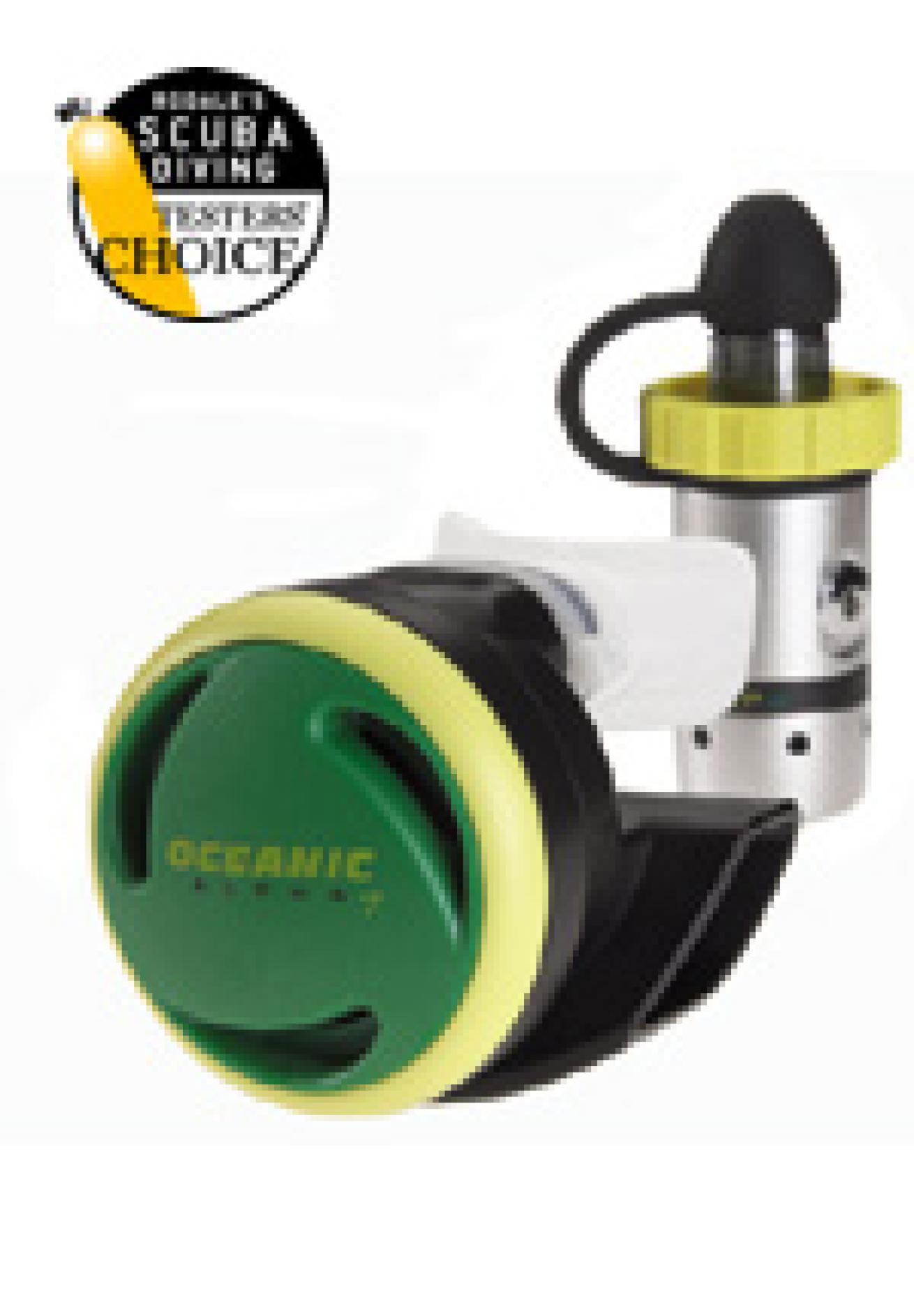

Zeagle Envoy Deluxe
The Envoy Deluxe is similar to the Envoy, with the addition of a resistance adjustment knob that enables you to tune the regulator to diving conditions. It was the only reg in its price class to earn perfect simulator scores. The Envoy Deluxe's work of breathing was slightly better than the standard Envoy (a diver probably wouldn't notice the difference, but our breathing machine did); again, thanks to the ability to adjust for optimum performance.
In the water, the Envoy Deluxe performs nearly identically to the standard Envoy. It's dry, a great breather and clears easily. The mouthpiece can be a problem for women with small mouths, but the adjustment knob is easy to use, as is the dive/predive lever, although it's not clearly marked. The Envoy Deluxe has one of the best warranties in its price class.
Testers' Choice Regulators: Over $400
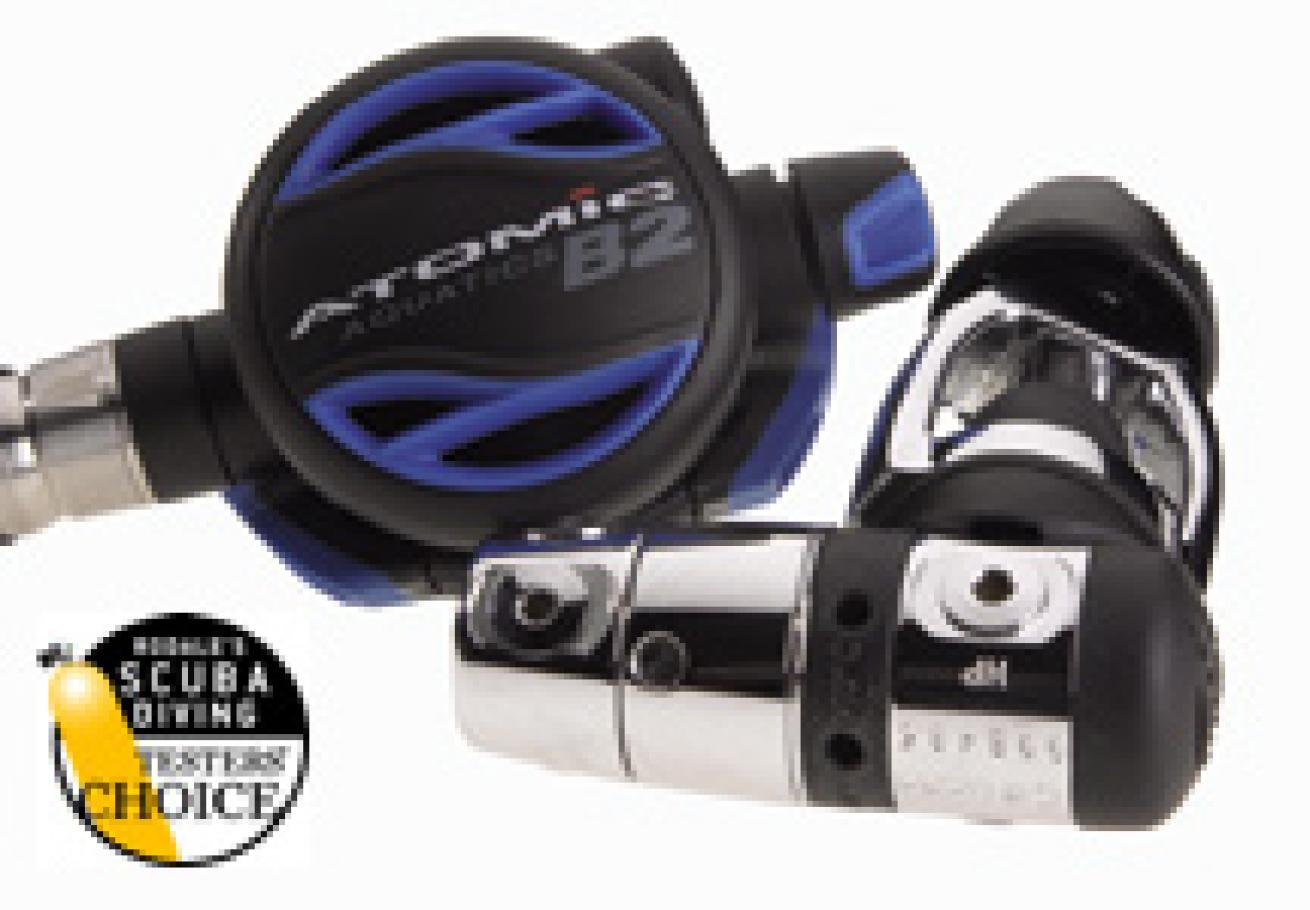
Atomic Aquatics B2
Atomic's new B2 breathes effortlessly on the simulator, regardless of RMV or depth. But this isn't just a laboratory reg. The B2 earned the highest total score for in-water performance of any reg in any price class. It breathes easily in all positions and is the only reg to earn an excellent score for dryness. The B2 is equipped with a resistance knob and Atomic's Automatic Flow Control instead of a dive/predive switch. According to Atomic, this depth-activated venturi control automatically balances performance and stability as depth increases.
The B2's balanced piston first stage has a low-pressure port swivel to simplify hose routing. The second stage is built with titanium components and features Atomic's "Comfort Swivel," the best of a new generation of second-stage swivels, providing 30 degrees of motion between second stage and low-pressure hose. The B2's dual silicone mouthpiece, introduced last year, is still a favorite among testers.
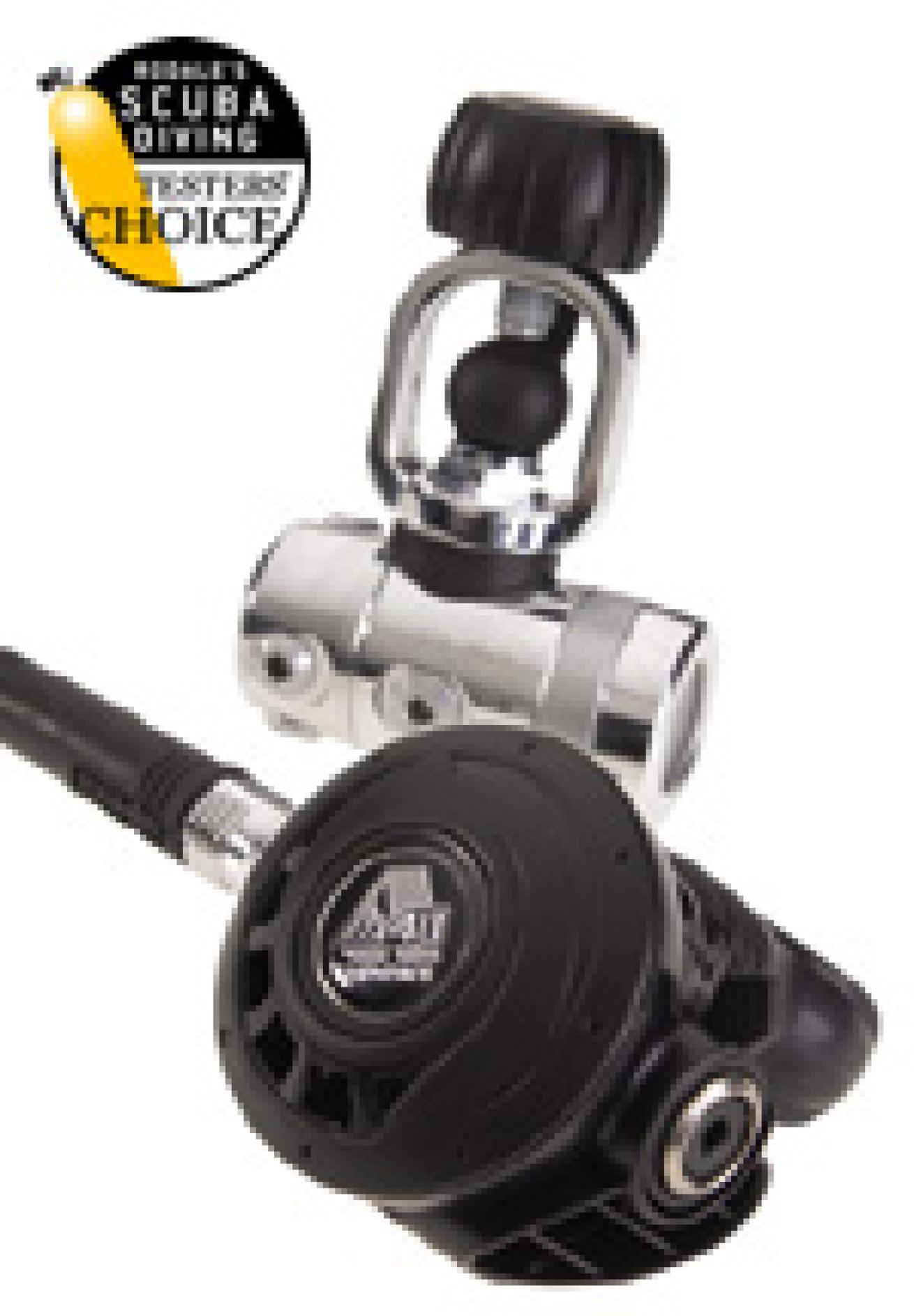
Apeks ATX100 & ATX40
The latest incarnation of the successful TX series of regulators, Apeks' new ATX regs feature "over-balanced" first stages and balanced second stages that are smaller and lighter than their predecessors. They are top performers on the breathing machine, delivering some of the lowest across-the-board work of breathing rates in this year's test group.
When subjected to real-world diving conditions, both regs breathe extremely easy in all positions. They breathe dry, and clear easily using either the responsive purge button or the blowing method. They're both fitted with Comfo-Bite mouthpieces, which testers found to be very comfortable. Their dive/predive levers are efficient and easy to operate, even when wearing gloves, but are not clearly marked.
The ATX40 has a convenient low-pressure port swivel on its first stage. The ATX100 has a second-stage adjustment knob that actually makes a difference in breathing, something that can't be said for all adjustment knobs.

Poseidon Xstream Dive
This is a unique regulator in a number of ways. While performance limits on all other regs in this test group are found on inhalation, the Xstream Dive's limits are found on exhalation. It is designed with continuous positive pressure, so during simulator tests, while the reg delivered the absolute lowest work of breathing at the initial RMV/depth, it was predicted that the continual free flow was going to be a problem with test divers in real-world conditions.
Big surprise--not only did our testers find the regulator to breathe smoothly--especially upside down and in other awkward positions--but it also breathed dry. The positive pressure simply did not register as a problem or even as an annoyance with any of the test divers.
The compact second stage is very comfortable in the mouth, and bubbles vent off to the side. The only downside is the purge system--it takes a forceful breath to clear when using the blowing method. The small purge button is hard to find and hard to press--especially when wearing gloves.
Other Regulators Tested: Regulators Under $300
Dacor Eagle| Dacor Eagle
This low-priced, entry-level reg boasts good to very good performance on the breathing machine. In-water tests show the small purge button to be a challenge while wearing gloves, and the narrow exhaust tee creates above-average bubble interference. But in all other in-water categories, this compact reg gets the job done. With Dynamic Flow Control (DFC) to optimize air flow to the second stage.

Dacor Eagle Sport| Dacor Eagle Sport
This regulator marries a standard Eagle second stage to a balanced diaphragm first stage, also equipped with Dynamic Flow Control. The combination produces very good simulator performance at all RMV/depths. In real-world diving, the Eagle Sport is a smooth breather and is very dry. As with the standard Eagle, however, the purge is awkward to use while wearing gloves.

H2Odyssey Sprint XL| H2Odyssey Sprint XL
Using the same first stage as the Sprint XS, the Sprint XL sports a larger second stage and generates much better breathing machine results. While a bit noisy on the inhale, the Sprint XL is a comfortable reg with an efficient purge. A small exhaust tee, however, produces a lot of bubbles. The resistance knob is easy to use, even with gloves, but didn't have an effect on breathing performance in our tests. The dive/predive switch is minuscule and hard to grip.
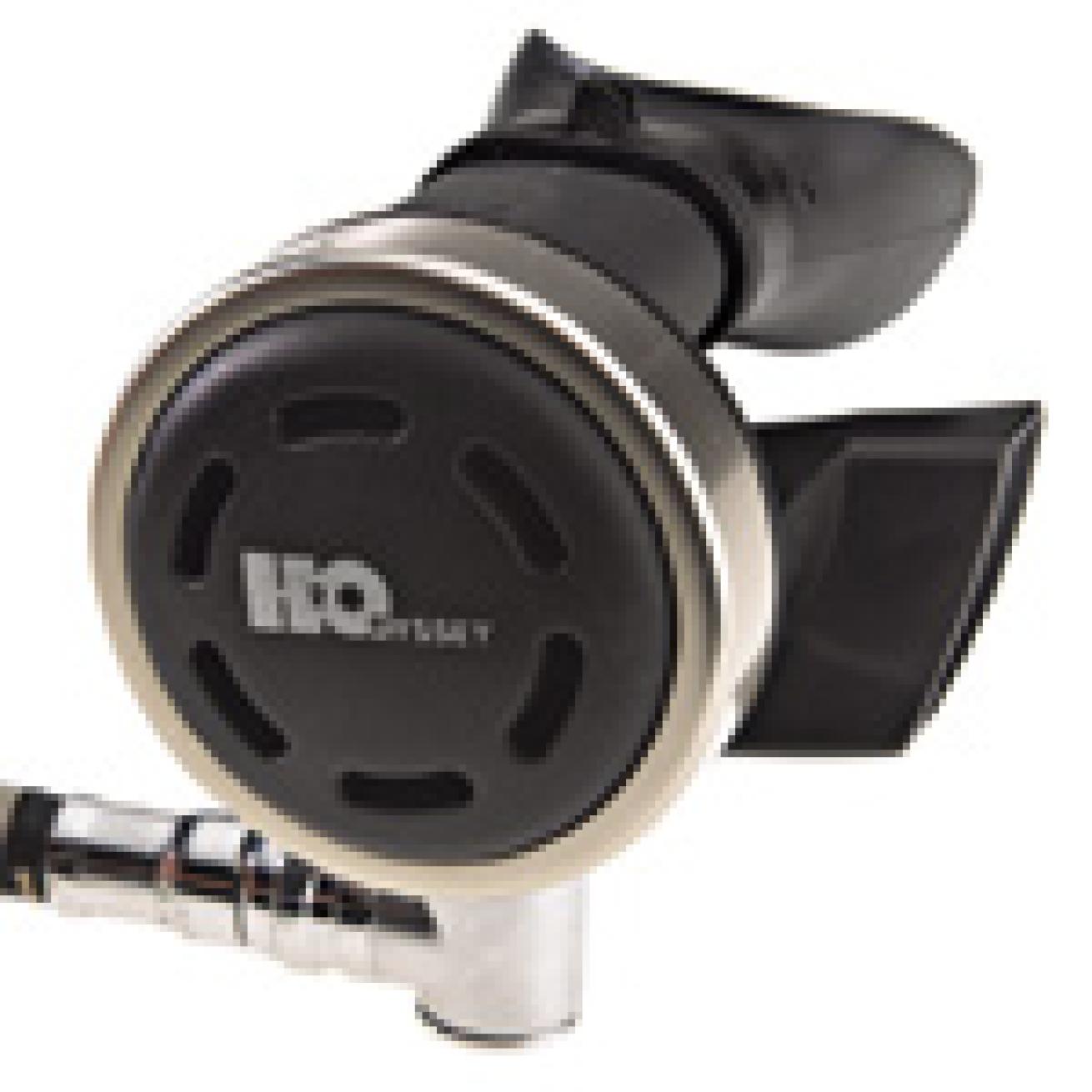
H2Odyssey Sprint XS| H2Odyssey Sprint XS
The Sprint XS showed very good work of breathing when simulating normal recreational diving. But increase the breathing rate or depth, and the reg simply can't keep up. In-water tests reveal an inhalation stutter and a slight, but continuous free flow. A 360-degree swivel allows the hose wide range of motion from the bottom of the second stage, and there's a low-pressure port swivel turret on the first stage, both nice touches.
Regulators $300-$400
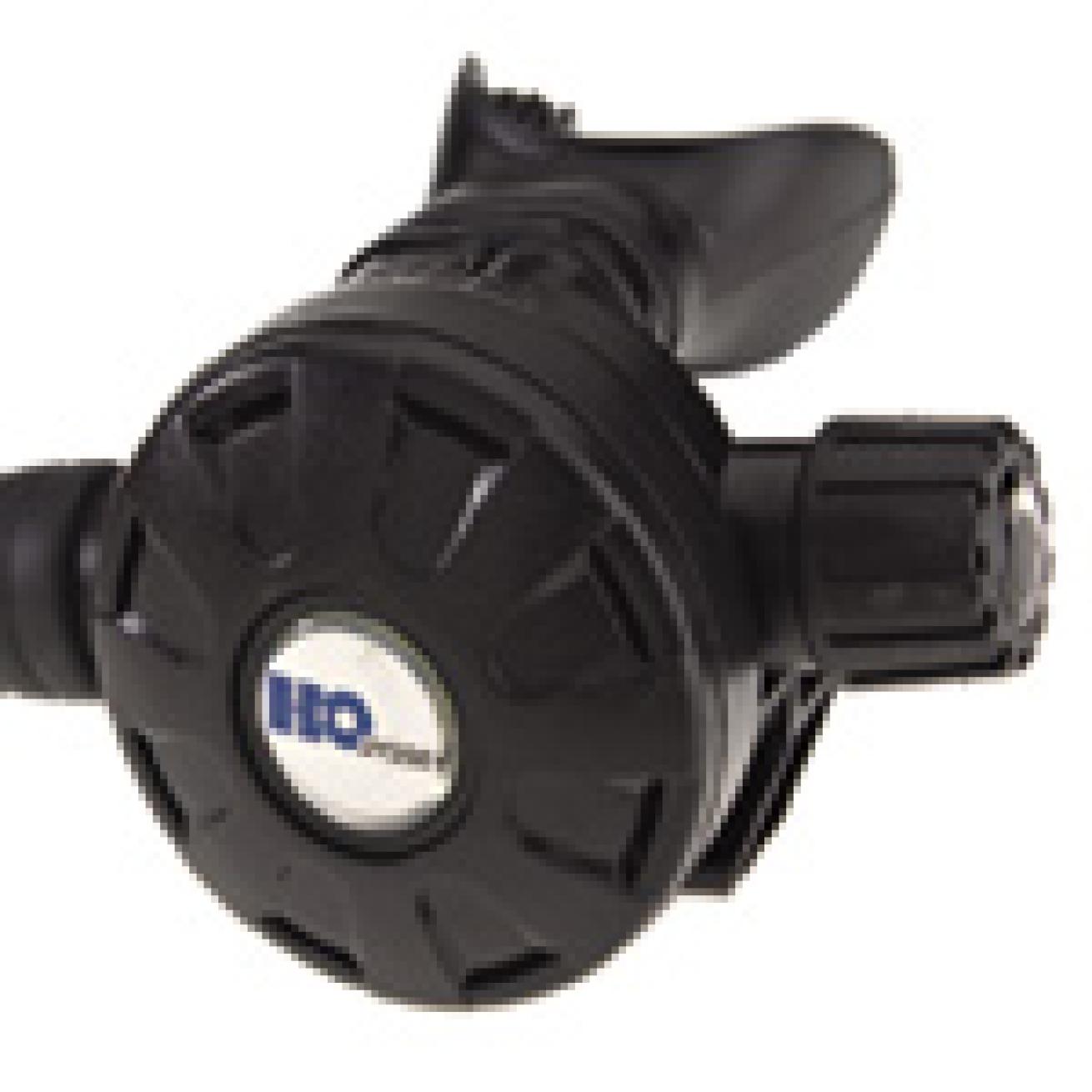
Aeris Atmos Sport| Aeris Atmos Sport
This is a solid, midpriced regulator that delivers good to excellent work of breathing on the simulator and respectable performance in the water. The second stage is a nice size and features an efficient purge. The small dive/predive switch is hard to grasp, but well-marked. The first stage has a primary low-pressure swivel that simplifies hose routing. However, the hose protector inhibits the swivel's range of motion.
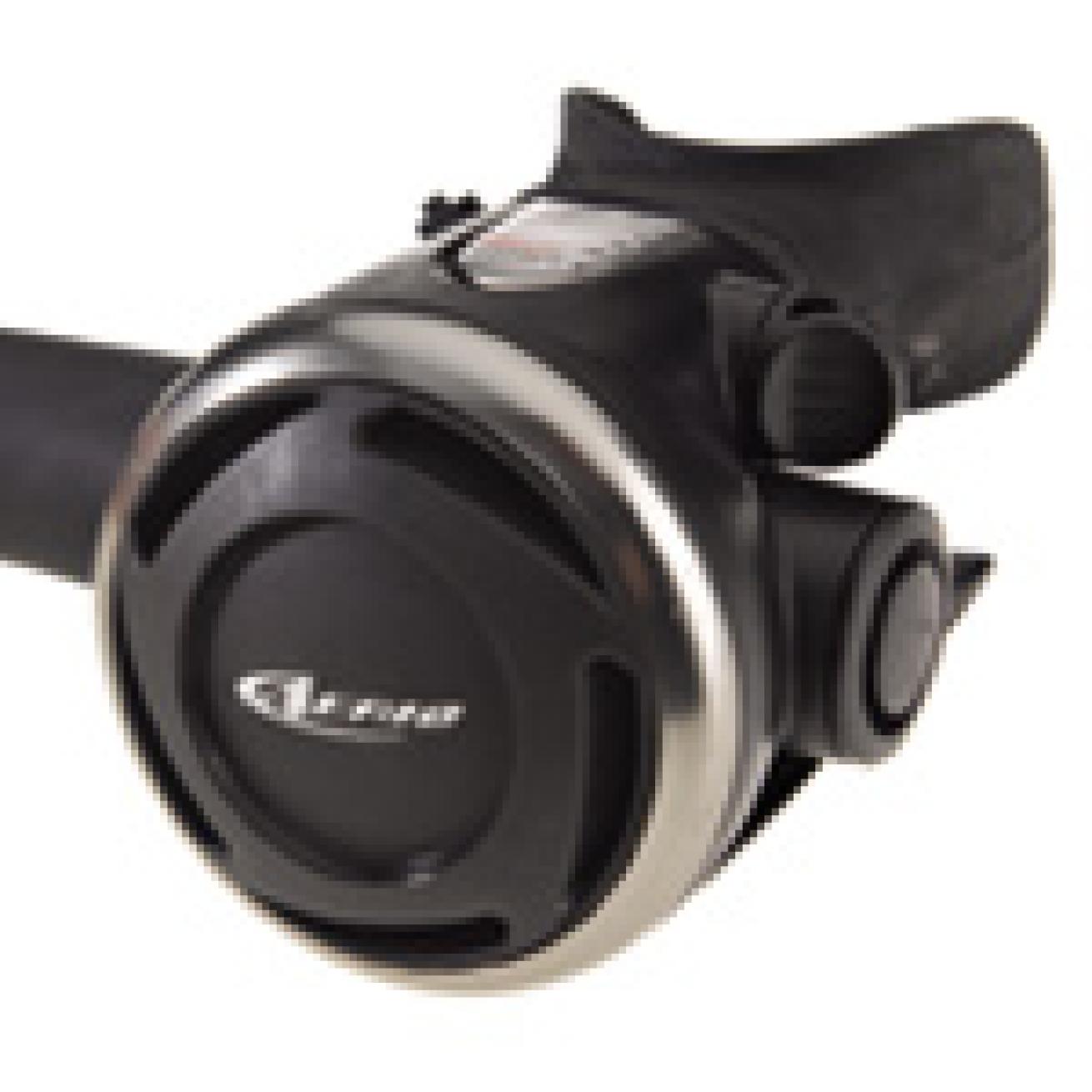
Apollo Bio A-120| Apollo Bio A-120
On the upside, the A-120's aluminum first stage is lightweight, and the second stage is compact and features a swivel. On the downside, the A-120's work of breathing is twice that of all other regs at the RMV/depth level most closely simulating recreational diving, which is the only test level the reg was able to reach without exceeding test parameters. In the water, the A-120's a noisy breather, but dry.
Other Regulators Tested: Regulators $300-$400 (cont.)
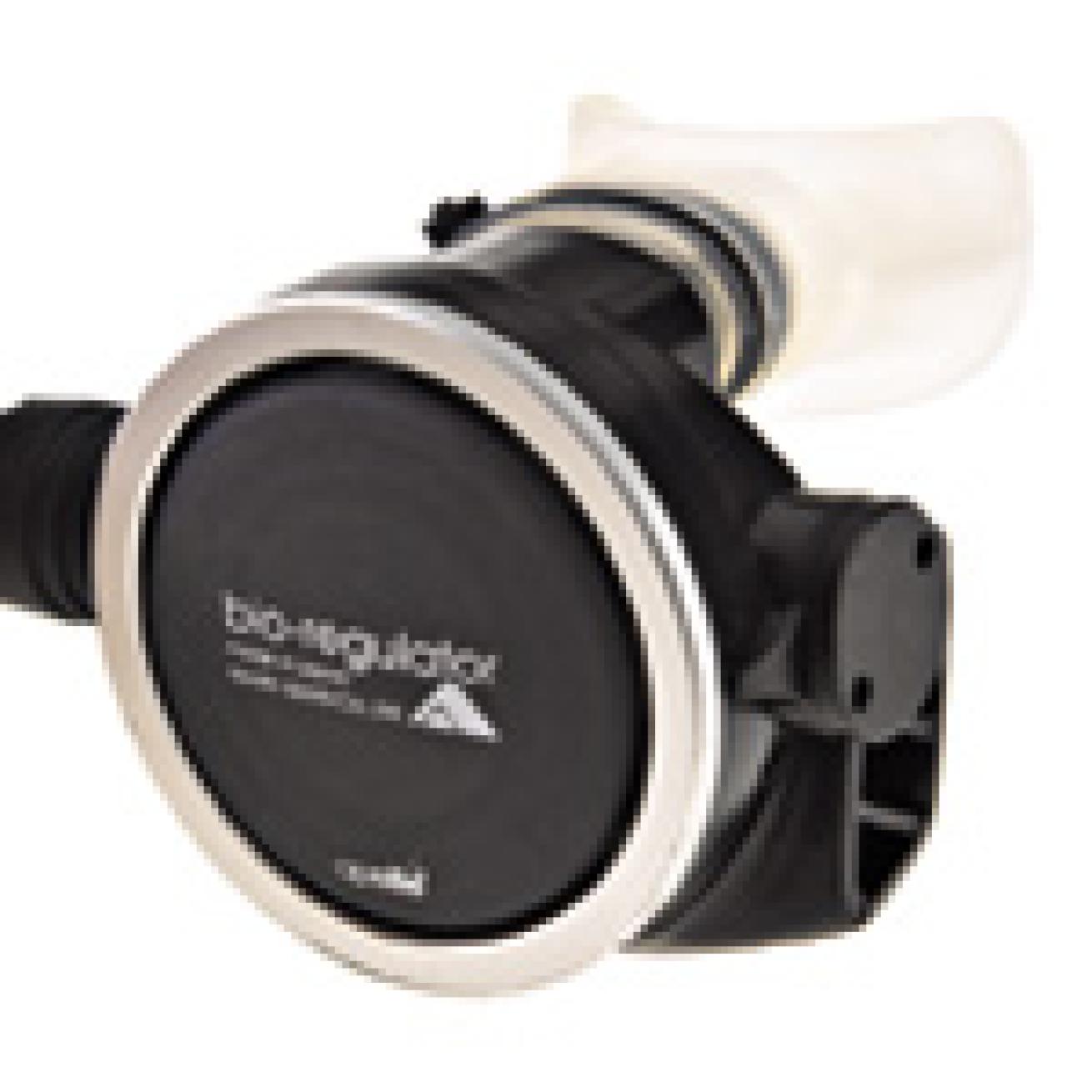
| Dive Rite RG2010| Dive Rite RG2010
This workhorse of a regulator gave a strong showing at the first three simulator RMV/depths and barely missed achieving the fourth. In the water, it's a smooth breather, although a bit damp in the heads-down position. The purge is stiff, but effective. The smallish dive/predive switch is clearly marked, and the resistance knob provides five full turns of adjustment. It comes standard with a DIN valve, but a yoke adapter is available.
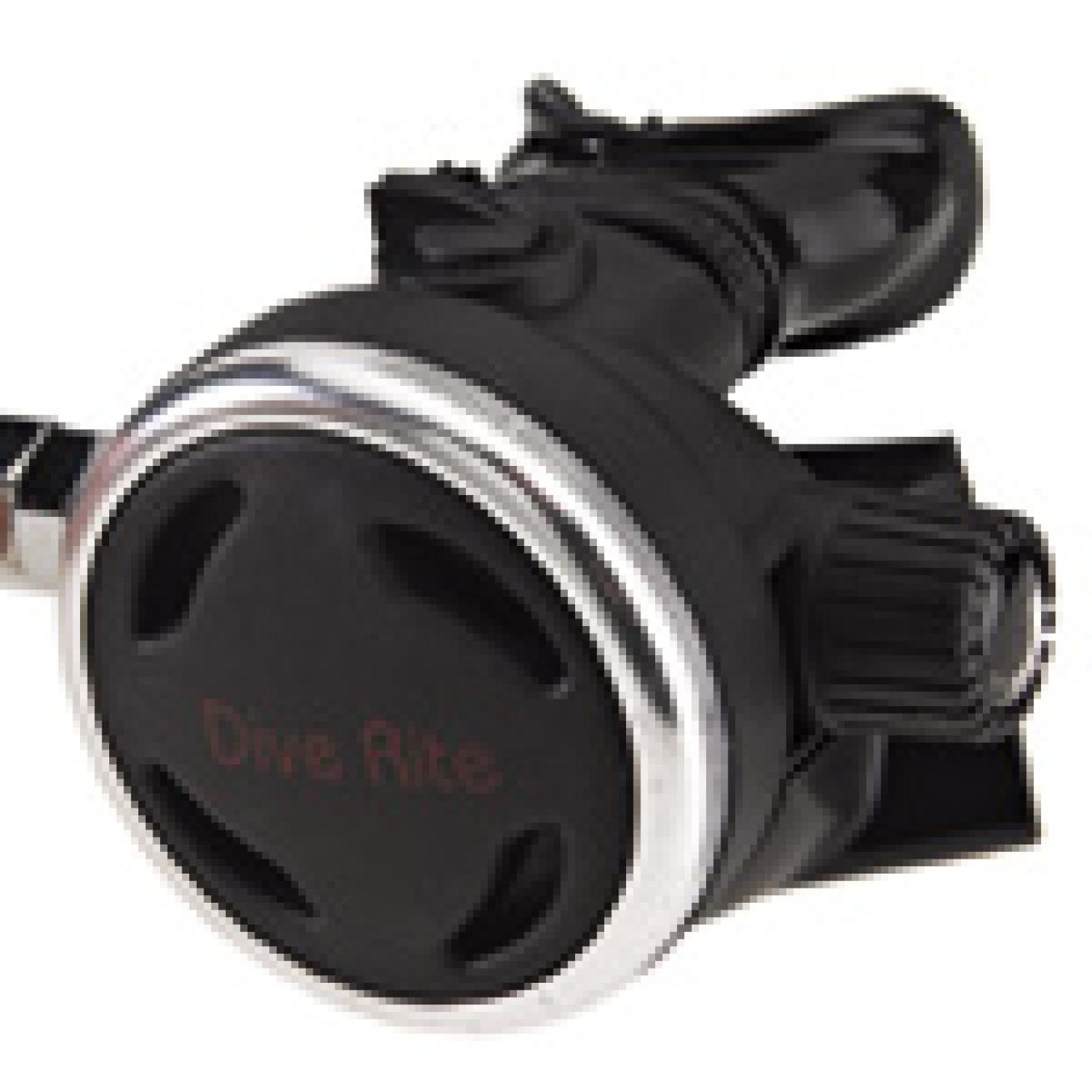
Oceanic GT/CDX5| Oceanic GT/CDX5
This regulator provided good to excellent simulator performance. Put it in the water, and it breathes dry and smooth in most positions, although breathing is a little labored while upside down. The GT second stage is the lightest in Oceanic's line-up. Like all Oceanic's regs, an optional limited service agreement is available.
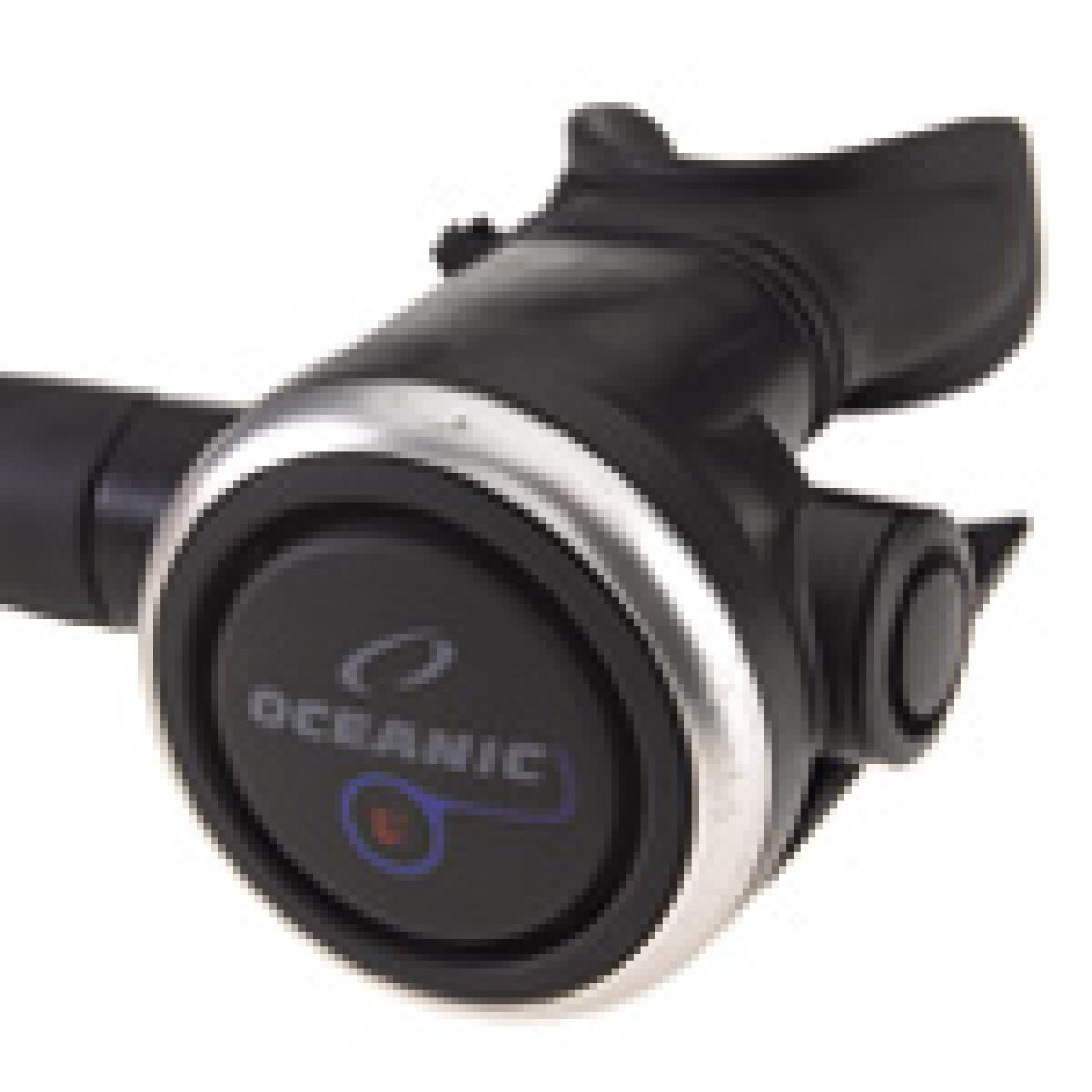
| Zeagle ZX/DS-V|
Zeagle ZX/DS-V
This is a strong performer on the simulator and in the water, and is a good breather in all positions. It has a compact, environmentally sealed first stage and dry, comfortable second stage that clears easily using either the purge button or blowing method. The adjustment knob is easy to use, and the dive/predive lever is efficient though not clearly marked. It comes with one of the best warranties in its class.
Regulators Over $400
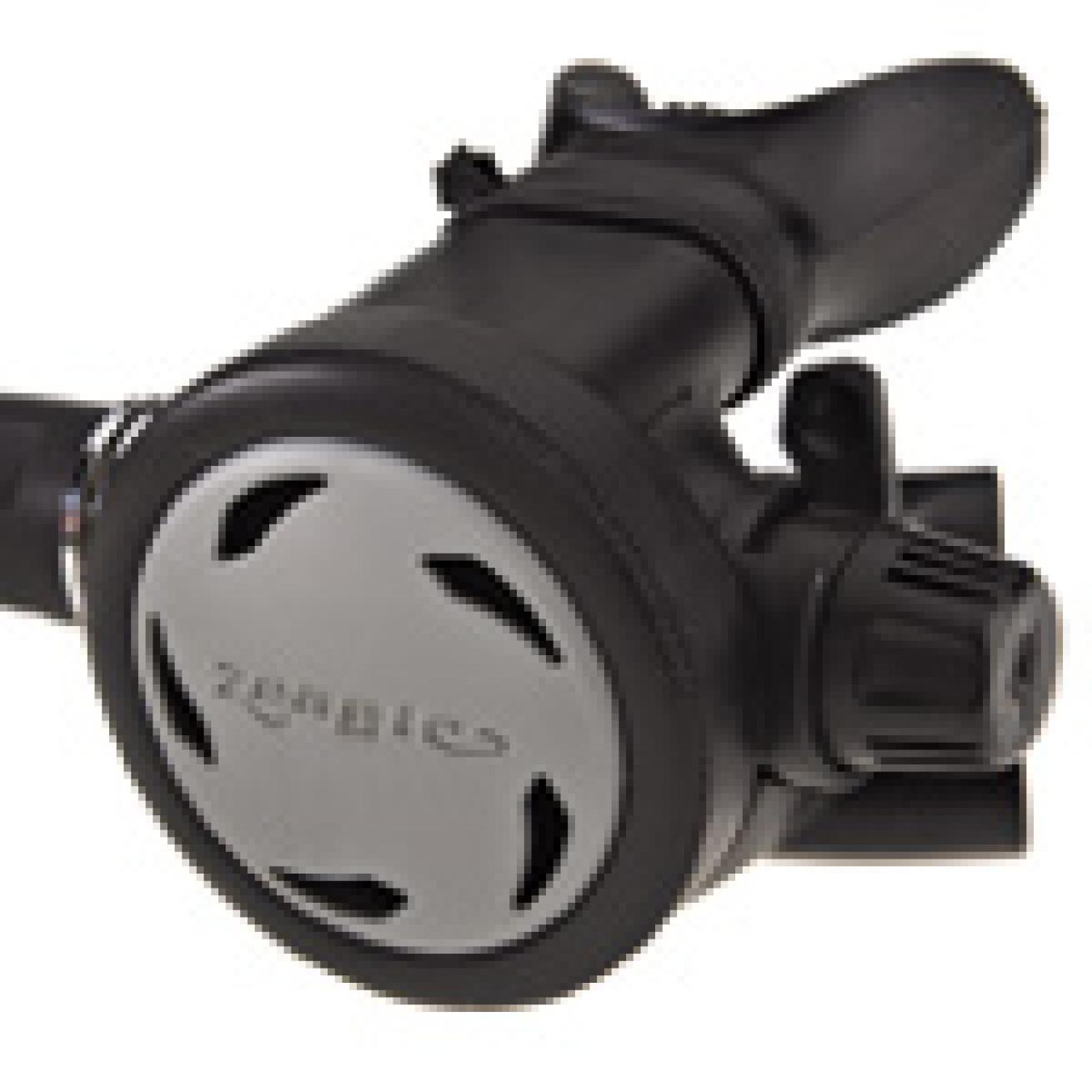
| Aeris Atmos Pro| Aeris Atmos Pro
We found the Aeris Atmos Pro doesn't perform quite as well as the less expensive Atmos Sport on the breathing simulator or in the water. While it breathes easily in a swimming position, the Atmos Pro is more labored than most in the heads-down and face-up positions, and it tends to breathe wet. It has a responsive, but stiff purge. The well-marked dive/predive switch is hard on the fingers, but the resistance knob is easy to use.
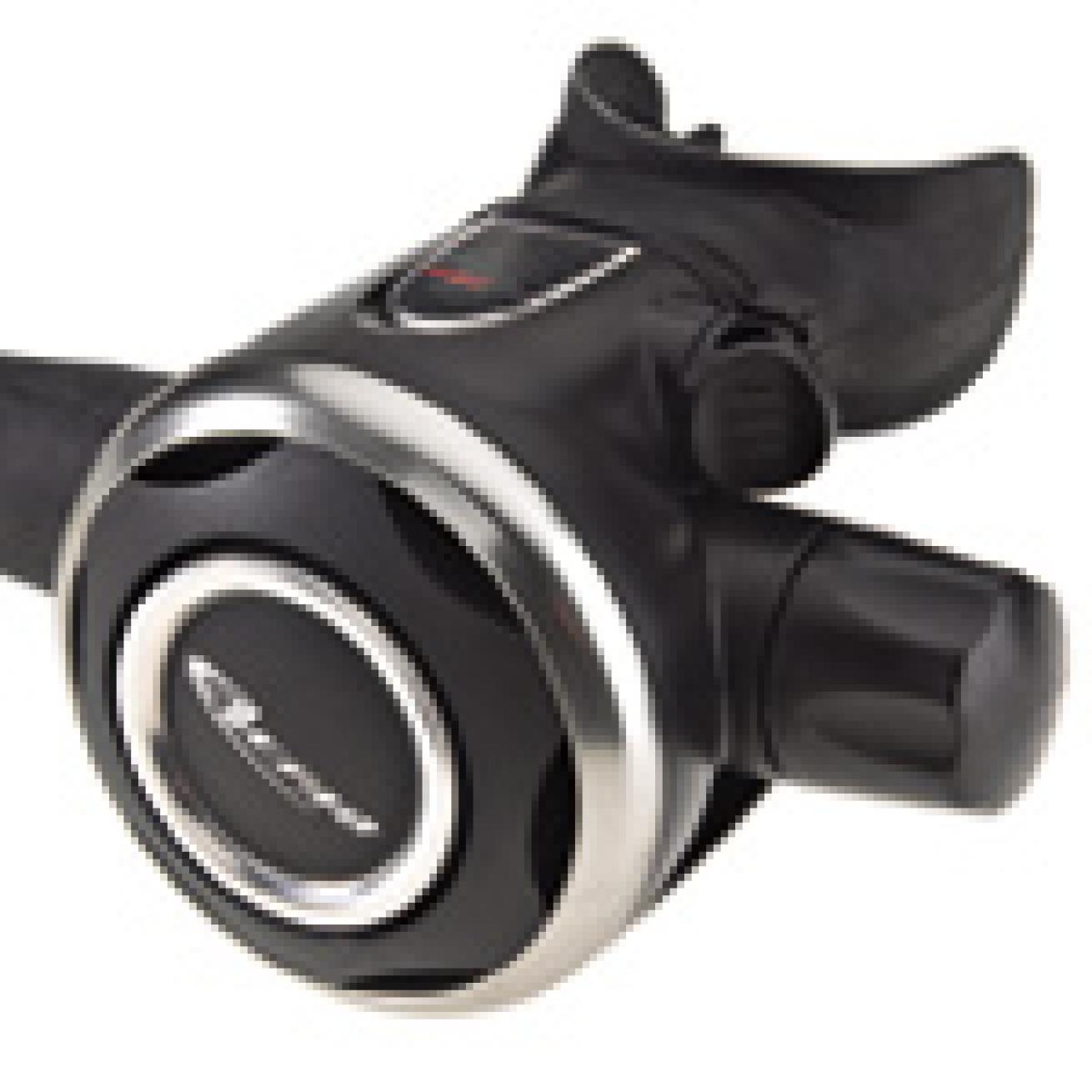
| Apollo Bio A-110 Moisturizing Reg| Apollo Bio A-110 Moisturizing Reg
The A-110's built-in clean air moisture system and in-line charcoal filter are interesting features, but when it comes to ease of breathing, this regulator trails far behind the others in its class. In the water, it's a noisy breather. The second stage swivel is nice, though, and it does have an efficient purge.
Other Regulators Tested: Regulators Over $400 (cont.)
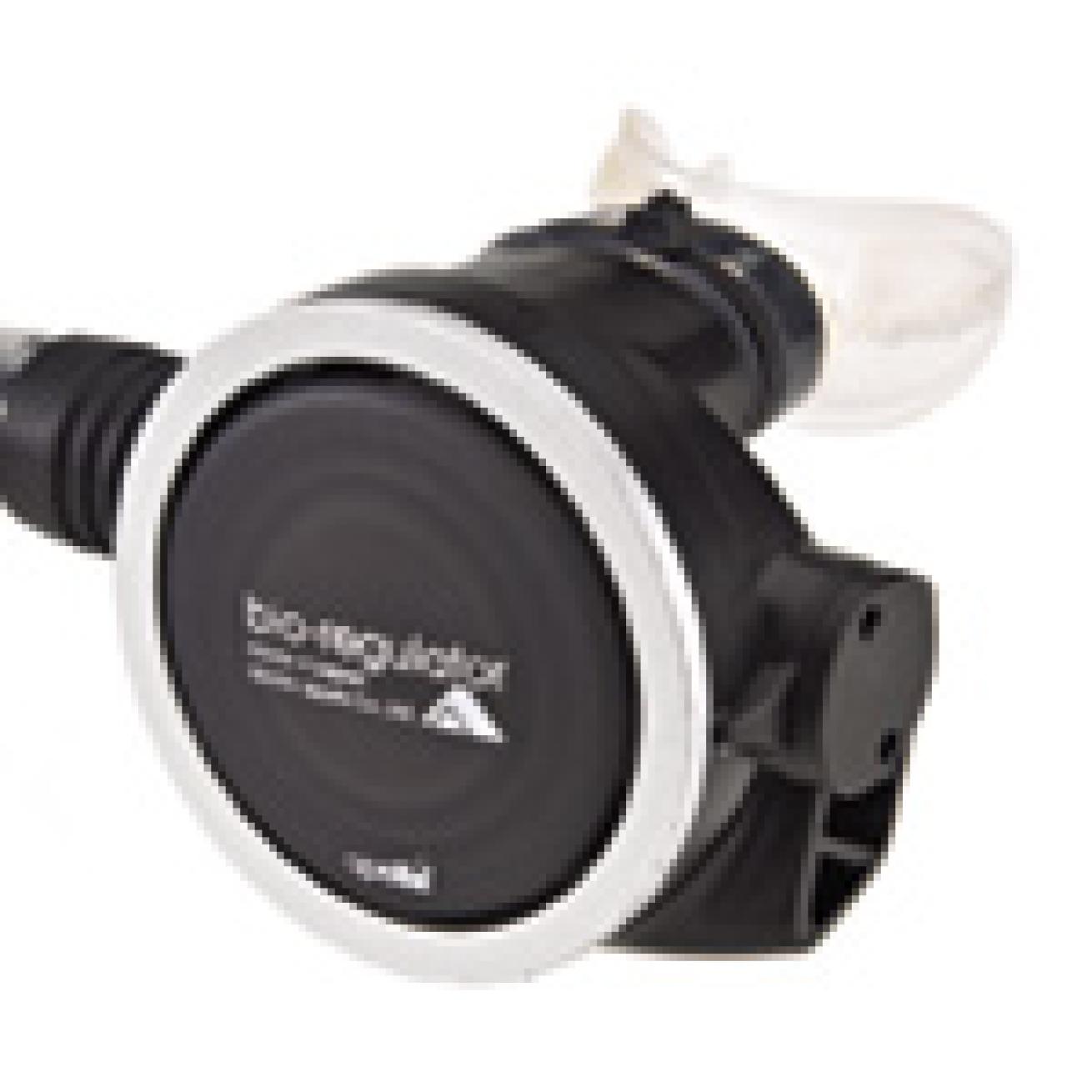
| Oceanic Delta 3/TDX5| Oceanic Delta 3/TDX5
With its all-titanium first stage and compact second stage, this high-end reg is lightweight and comfortable, and simulator performance is solid. In the water, it's a nice breather in all positions and easy to clear, using either the purge or blowing method. The tiny, poorly marked dive/predive switch, however, is hard to see and even harder to use.
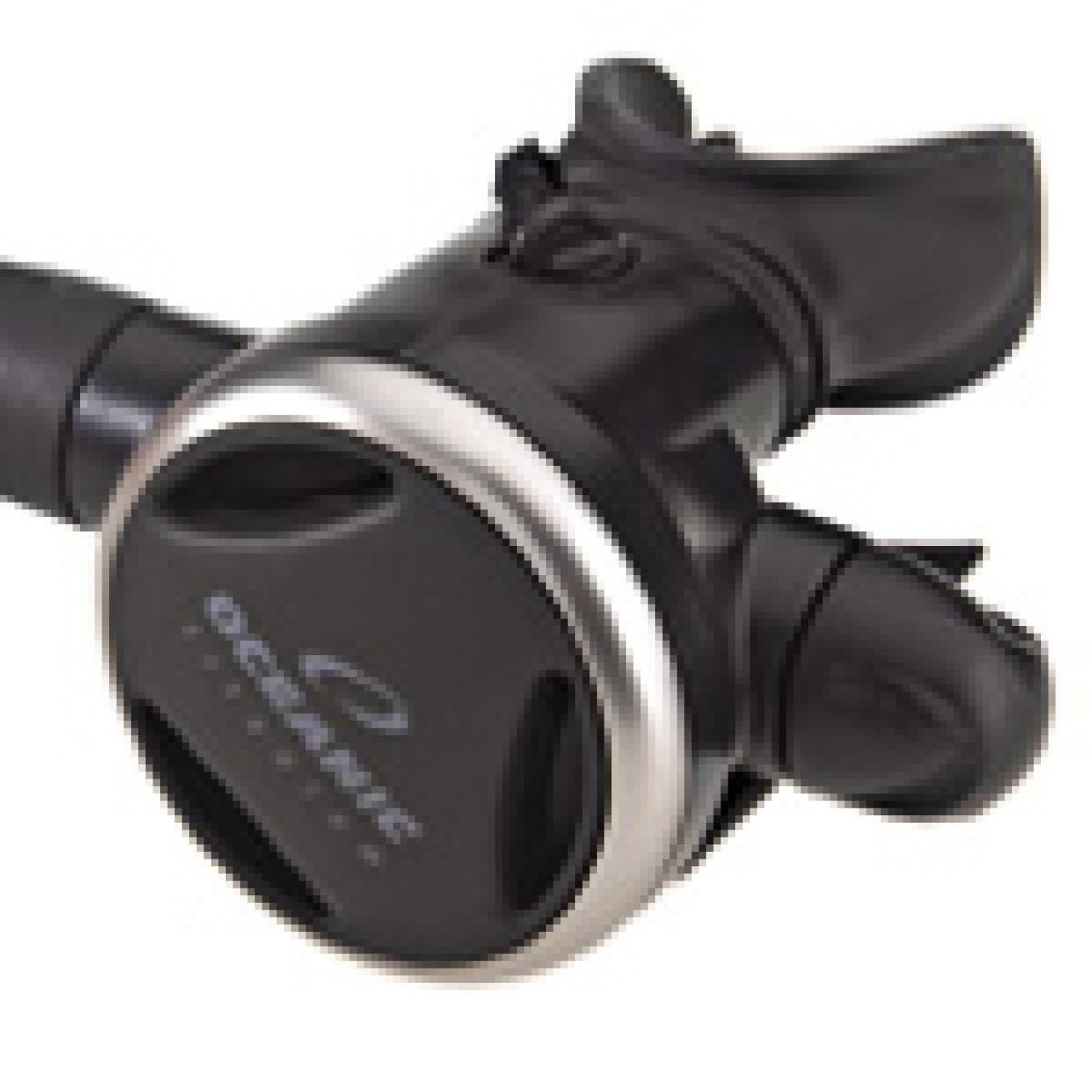
Oceanic Omega 2/DX4| Oceanic Omega 2/DX4
The Omega 2 features an effective side exhaust and beefy second-stage swivel. It's a comfortable reg, a sweet breather in all positions, and boasts excellent work of breathing at the initial RMV/depth. It just doesn't have the reserve capacity of other regs to handle the deeper test depths or more stressful RMVs at lower supply pressures. The purge is forceful, but its small button is hard to find and use, especially while wearing gloves.
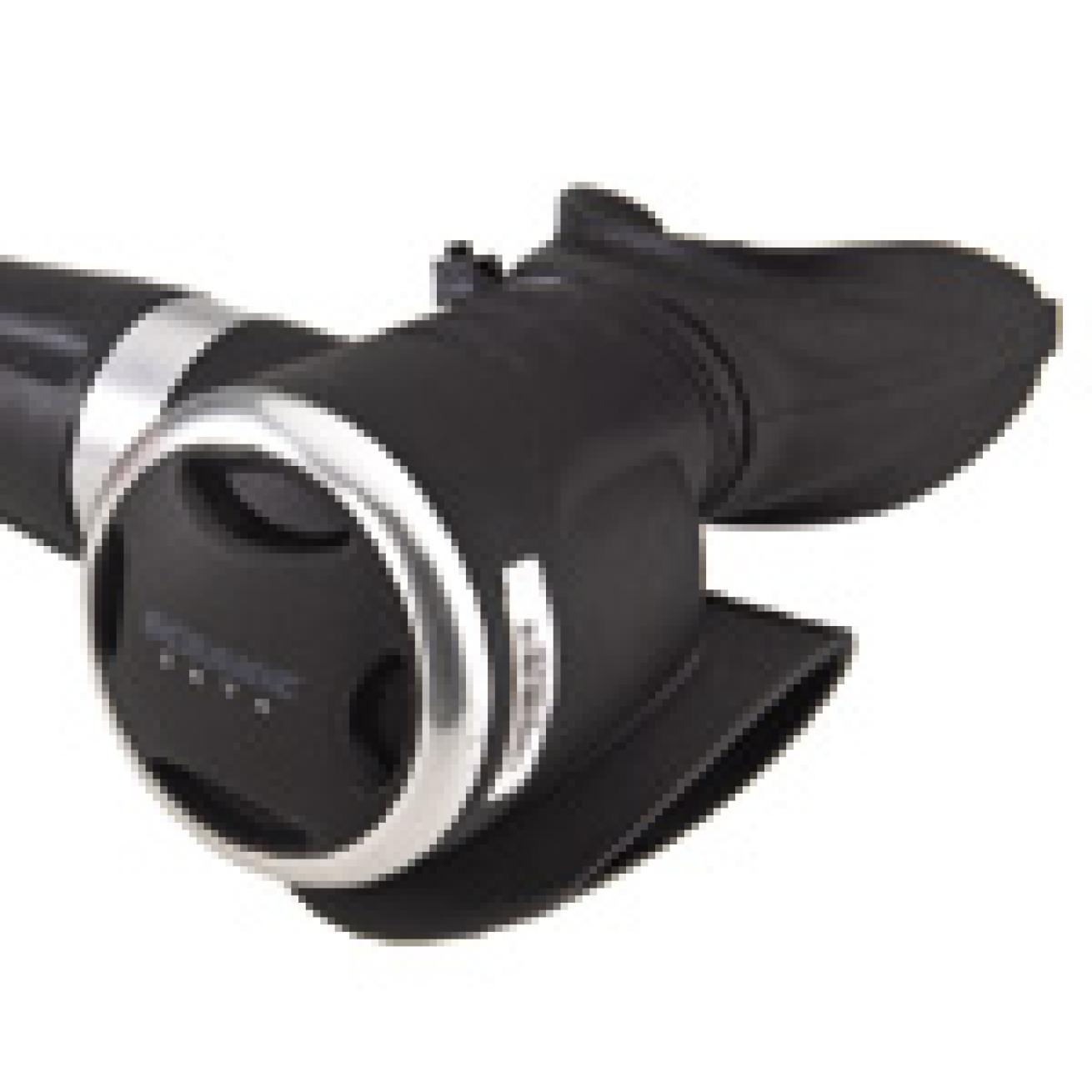
Oceanic Zeta/CDX5| Oceanic Zeta/CDX5
This mini-second stage is feather-light in the mouth. Bubble interference is minimal for such a narrow exhaust tee. Although a dry breather, the test Zeta had a tendency to free flow--especially in the heads-down position--but that could probably be tuned out on an adjustment bench.

| Tusa RS240| Tusa RS24
With some of the highest in-water scores in its price class, the RS240 breathes dry and smoothly in all positions. The second stage has a swivel, an efficient purge system and a resistance knob with 10 positive-click settings. On the simulator, the reg delivered very good work of breathing at the initial RMV/depth. It is sensitive to lower supply pressures, however, so it doesn't offer as much reserve capacity as other regs in its price class. Within the bounds of recreational diving, this is a capable regulator {mospagebreak}
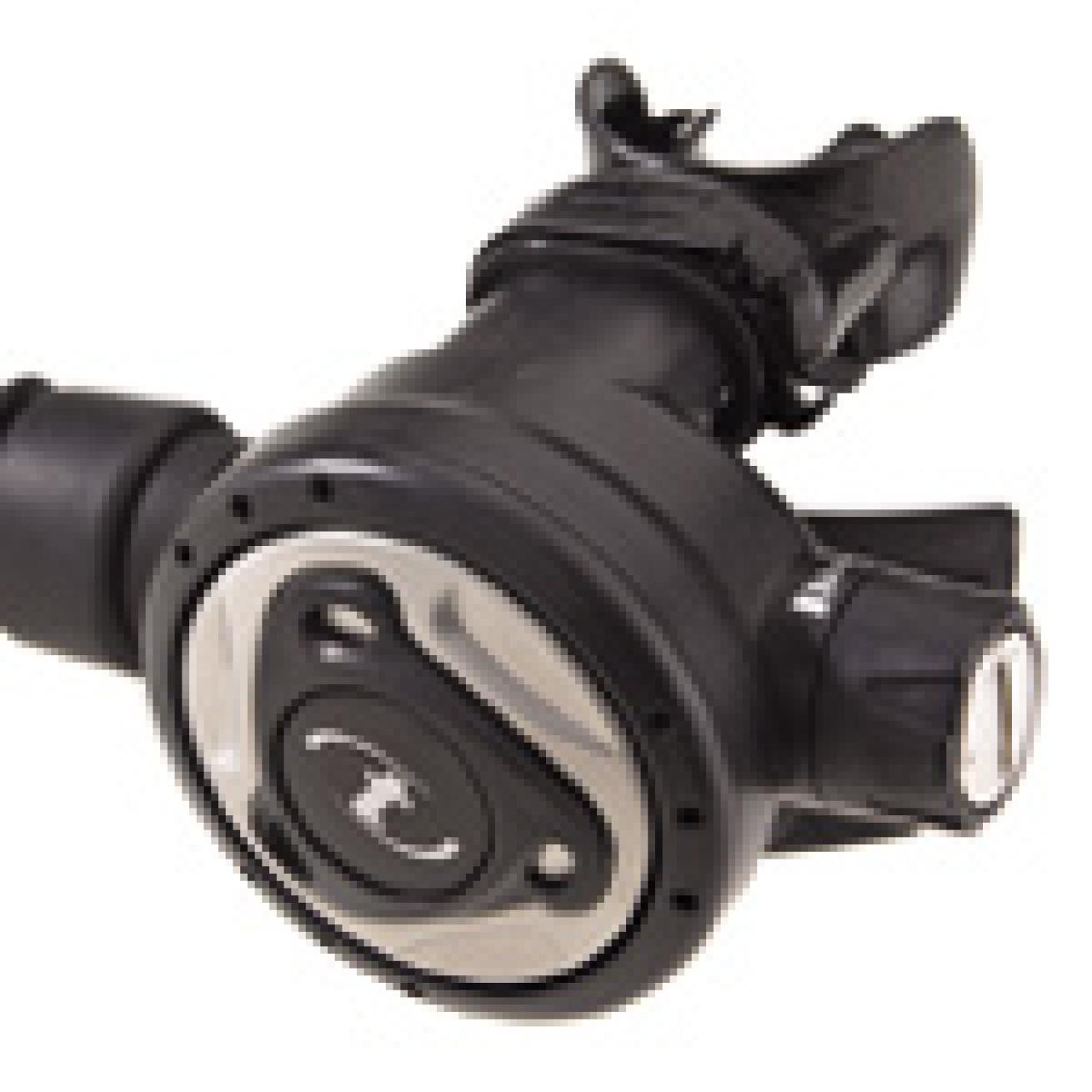
Dive Lab puts regs through their paces on the breathing simulator. Photography by Nick Lucey| The 23-regulator test bed was tested on an ANSTI wet breathing simulator at Dive Lab, an independent facility in Panama City Beach, Fla. Following surface checks, the regulators were tested at three breathing rates--37.5 RMV, 62.5 RMV and 75 RMV--at three depths each--132 feet, 165 feet and 198 feet--capturing seven data points per RMV/depth for a total of 70 data points per regulator.
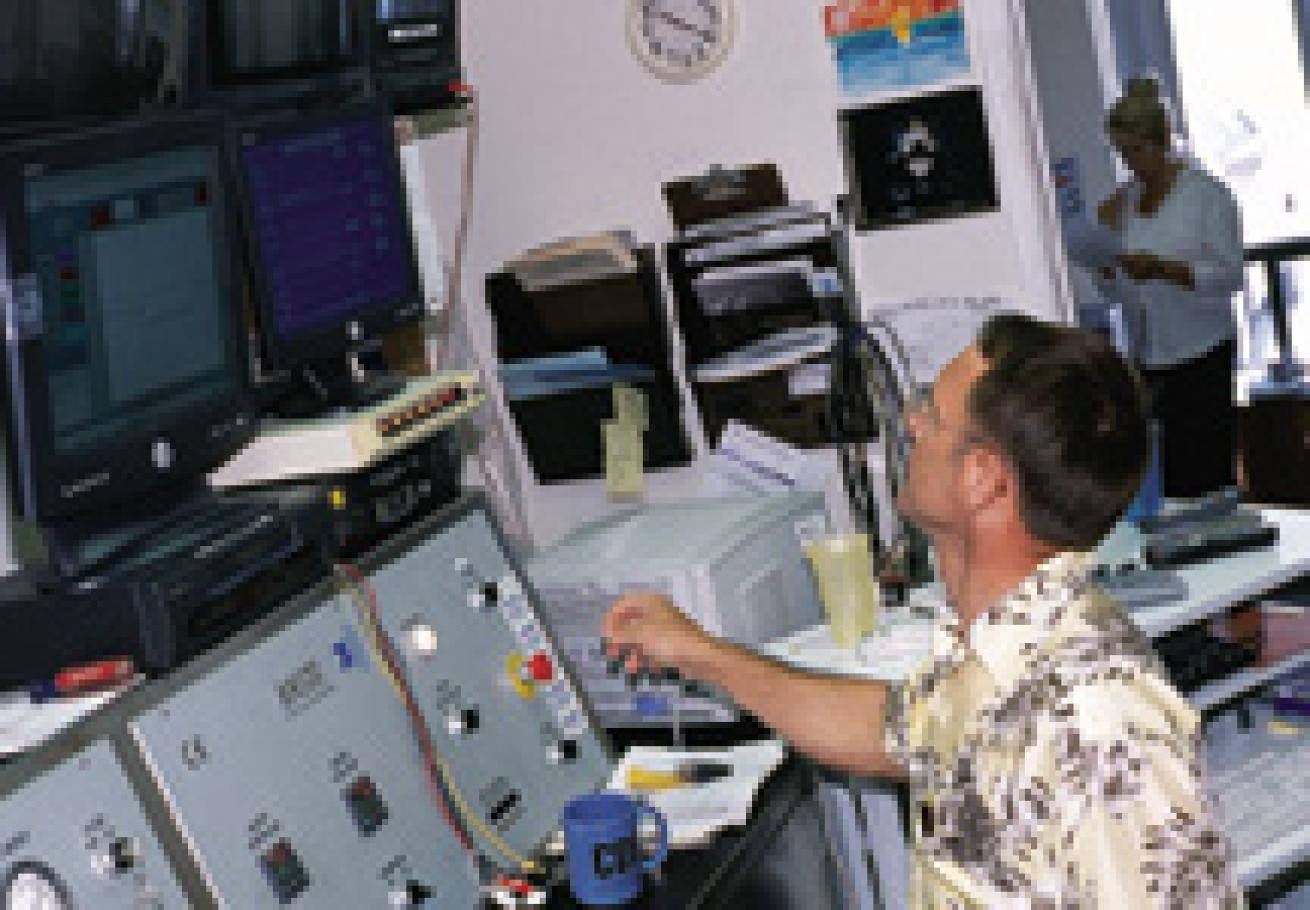
Tests were performed at a supply pressure of 725-760 psi to conform to EN250 test standards, rather than the 1,500-psi supply pressure used by the U.S. Navy. If a regulator can perform well at the lower supply pressure, it will invariably perform wonderfully at higher supply pressures. A sampling of tests were also done at the 1,500-psi supply pressure for comparative purposes.
Note: Simulator tests are not intended to pass or fail regulators, but to scientifically gauge their performance based on controlled conditions. Breathing machine performance does not necessarily reflect in-water performance, simply because there are toany real-world variables that simulators can't measure. Breathing simulator results are important, but they tell only half the story. To read about the criteria evaluated in the in-water portion of the test, see the bottom rows of the chart.
Many Thanks ...
... to Mike Ward and Dive Lab in Panama City Beach, Fla., for work on the breathing simulator and Express Divers in Long Beach, Calif., for support of the in-water portion of the tests.
For More Information
AERIS > www.diveaeris.com
APEKS > www.sea-quest.com
APOLLO SPORTS USA > www.apollosportsusa.com
ATOMIC AQUATICS > www.atomicaquatics.com
DACOR > www.divedacor.com
DIVE RITE > www.dive-rite.com
H2ODYSSEY > www.h2odyssey.com
OCEANIC > www.oceanicworldwide.com
POSEIDON > www.poseidon.se
TUSA > www.tusa.com
ZEAGLE > www.zeagle.com
| MANUFACTURER Product Name | PRICE| WARRANTY| MADE IN| 1ST STAGE| PORTS| 2ND STAGE| 2ND STAGE ADJUSTMENTS| FACTORY-READY NITROX-CAPABLE |
| UNDER $300 | |
| DACOR Eagle | $199| limited lifetime| Italy| unbalanced piston| 1 HP 4 LP| unbalanced| none| no |
| DACOR Eagle Sport | $229| limited lifetime| Italy| balanced diaphragm| 2 HP 4 LP| unbalanced| none| no |
| H20DYSSEY Sprint XS | $249| 2-year limited| Taiwan| balanced diaphragm| 2 HP 4 LP| balanced| none| up to 40% |
| H20DYSSEY Sprint XL | $299| 2-year limited| Taiwan| balanced diaphragm| 2 HP 4 LP| balanced| resistance knob; dive/pre-dive| up to 40% |
| ZEAGLE Envoy | $299| limited lifetime| USA| balanced diaphragm| 2 HP 5 LP| balanced| dive/pre-dive| up to 40% $300-$400 |
| AERIS Atmos Sport | $399.95| 2-year limited| USA| balanced diaphragm| 2 HP 5 LP| balanced| dive/pre-dive| up to 40% |
| APOLLO Bio A-120 | $389| limited lifetime| Japan| balanced diaphragm| 2 HP 4 LP| unbalanced| none| up to 40% |
| DACOR Eagle Pro DPD | $399| limited lifetime| Italy| balanced diaphragm| 2 HP 5 LP| unbalanced| dive/pre-dive| no |
| DIVE RITE RG2010 | $395| 1 year| USA| balanced diaphragm| 2 HP 4 LP| balanced| resistance knob; dive/pre-dive| up to 40% |
| OCEANIC GT/CDX5 | $365| 2-year limited| USA| balanced diaphragm| 2 HP 4 LP| unbalanced| none| up to 40% |
| OCEANIC 02 Tech | $379| 2-year limited| USA| unbalanced piston| 1 HP 4 LP| unbalanced| none| 100% |
| ZEAGLE Envoy Deluxe | $349| limited lifetime| USA| balanced diaphragm| 2 HP 5 LP| balanced| resistance knob; dive/pre-dive| up to 40% |
| ZEAGLE ZX/DS-V | $399| limited lifetime| USA| balanced diaphragm| 2 HP 5 LP| balanced| resistance knob; dive/pre-dive| up to 40% |
| OVER $400 | |
| AERIS Atmos Pro | $449.95| 2-year limited| USA| balanced diaphragm| 2 HP 5 LP| balanced| resistance knob; dive/pre-dive| up to 40% |
| APEKS ATX100 | $649| limited lifetime| UK| over-balanced diaphragm| 2 HP 4 LP| balanced| resistance knob; venturi control lever| up to 40% |
| APEKS ATX40 | $469| limited lifetime| UK| over-balanced diaphragm| 2 HP 4 LP| balanced| venturi control lever| up to 40% |
| APOLLO Bio A-110 Moisturizing | $499| limited lifetime| Japan| balanced diaphragm| 1 HP 3 LP| unbalanced| none| up to 40% |
| ATOMIC AQUATICS B2 | $699| limited lifetime| USA| balanced piston| 2 HP 4 LP| balanced| resistance knob| up to 40% |
| OCEANIC Delta 3/TDX5 | $1,250| 2-year limited| USA| balanced diaphragm| 2 HP 4 LP| balanced| resistance knob; dive/pre-dive| up to 40% |
| OCEANIC Omega 2/DX4 | $499| 2-year limited| USA| balanced diaphragm| 2 HP 4 LP| balanced| none| up to 40% |
| OCEANIC Zeta/CDX5 | $609| 2-year limited| USA| balanced diaphragm| 2 HP 4 LP| balanced| none| up to 40% |
| POSEIDON Xstream Dive | $655| 2 years| Sweden| balanced diaphragm| 2 HP 5 LP| unbalanced| none| no |
| TUSA RS240 | $449| limited lifetime| Japan| balanced diaphragm| 2 HP 4 LP| unbalanced| resistance knob| up to 40% |
| ERGO PERFORMANCE | BREATHING SIMULATOR SCORES | |
| MANUFACTURER Product Name | EASE OF BREATHING | DIFFERENT POSITIONS| WETNESS| BUBBLE INTERFERENCE| EASE OF CLEARING| COMFORT| ADJUSTMENTS| A| B| C| D| TOTAL |
| UNDER $300 | ||
| DACOR Eagle | 3 | 3| 4| 3| 3| 3| N/A| 4| 3| 4| 3| 14 |
| DACOR Eagle Sport | 3 | 3| 4| 3| 3| 3| N/A| 4| 4| 4| 4| 16 |
| H20DYSSEY Sprint XS | 3 | 3| 3| 3| 3| 3| N/A| 4| | | | 4 |
| H20DYSSEY Sprint XL | 3 | 3| 3| 2| 4| 3| 3| 5| 3| 3| | 11 |
| ZEAGLE Envoy | 3 | 3| 4| 3| 4| 3| 3| 5| 5| 5| 5| 20 |
| $300-$400 | ||
| AERIS Atmos Sport | 4 | 3| 3| 3| 4| 3| 2| 5| 3| 4| | 12 |
| APOLLO Bio A-120 | 2 | 3| 4| 3| 3| 3| N/A| 3| | | | 3 |
| DACOR Eagle Pro DPD | 3 | 3| 4| 3| 3| 3| 3| 5| 4| 4| 4| 17 |
| DIVE RITE RG2010 | 3 | 3| 3| 3| 4| 3| 3| 5| 4| 4| | 13 |
| OCEANIC GT/CDX5 | 3 | 3| 4| 3| 3| 3| N/A| 5| 3| 4| 3| 15 |
| OCEANIC 02 Tech | 3 | 3| 4| 3| 4| 3| N/A| 5| 4| 4| 3| 16 |
| ZEAGLE Envoy Deluxe | 3 | 3| 4| 3| 4| 3| 3| 5| 5| 5| 5| 20 |
| ZEAGLE ZX/DS-V | 3 | 3| 3| 3| 4| 3| 3| 5| 4| 4| 4| 17 |
| OVER $400 | ||
| AERIS Atmos Pro | 4 | 2| 2| 3| 3| 3| 3| 5| | 3| | 8 |
| APEKS ATX100 | 4 | 4| 4| 3| 4| 4| 4| 5| 5| 5| 5| 20 |
| APEKS ATX40 | 4 | 4| 4| 3| 4| 4| 3| 5| 5| 5| 5| 20 |
| APOLLO Bio A-110 Moisturizing | 3 | 3| 3| 3| 4| 3| N/A| 3| | | | 3 |
| ATOMIC AQUATICS B2 | 4 | 4| 5| 3| 4| 4| 3| 5| 5| 5| 5| 20 |
| OCEANIC Delta 3/TDX5 | 3 | 3| 3| 3| 4| 3| 3| 5| 3| 3| 3| 14 |
| OCEANIC Omega 2/DX4 | 4 | 3| 3| 4| 2| 4| N/A| 5| | | | 5 |
| OCEANIC Zeta/CDX5 | 3 | 2| 4| 3| 3| 3| N/A| 5| 3| 3| 3| 14 |
| POSEIDON Xstream Dive | 3 | 4| 4| 3| 2| 4| N/A| 5| 4| 5| 4| 18 |
| TUSA RS240 | 4 | 4| 4| 3| 4| 4| 4| 4| | 3| | 7 |
| REGULATOR TESTING: IN THE WATER Scores of ergonomic criteria are weighted by importance, as follows: |
||
| MOST IMPORTANT EASE OF BREATHING: How well does the regulator deliver air while the diver is propelling himself forward in the standard swimming position? DIFFERENT POSITIONS: How does the regulator breathe when the diver is in a heads-up or face-down position? WETNESS: Does the regulator breathe wet or dry during normal or odd swimming positions? | MODERATELY IMPORTANT BUBBLE INTERFERENCE: Taking into account that all regulators produce bubble interference to a certain degree, when looking down, straight ahead, up at a 45-degree angle and straight up, do the bubbles rise into the diver's field of view at a rate that is average, less than average or greater than average? EASE OF CLEARING: Divided into two parts: 1) How difficult is it to find and use the purge, and how forceful is the purge? 2) How much force is required to clear the regulator by using the blowing method? | CONVENIENCE ELEMENTS COMFORT: Also divided into two parts: 1) How comfortable is the mouthpiece? How does the second stage feel in the mouth? 2) Does hose length and stiffness restrict head movement or otherwise cause discomfort? ADJUSTMENTS: If the regulator has diver-controlled adjustments, how easy are they to find, grip and turn? Do they do their job in a reasonable manner? |
| RATING SYSTEM FOR ERGONOMIC PERFORMANCE: 5=EXCELLENT 4=VERY GOOD 3=GOOD 2=FAIR 1=POOR | ||
| Note: Blank spaces indicate that the regulator was not able to achieve the RMV/depth category without exceeding the 25 millibar test limits on either inhalation or exhalation. | ||
| SIMULATOR CHART DEFINITIONS COLUMN A > 37.5 RMV @ 132 fsw: The maximum recreational depth at a somewhat aggressive breathing rate. COLUMN B > 75 RMV @ 132 fsw: The maximum recreational depth looked at as 1) an extremely heavy work rate or 2) loosely simulating two divers buddy breathing at a somewhat aggressive breathing rate. COLUMN C > 62.5 RMV @ 165 fsw: The European conformance standard EN250. This is also the depth and breathing rate commonly used by manufacturers when determining a regulator's performance. COLUMN D > 62.5 RMV @ 198 fsw: The U.S. Navy's Class A test depth and breathing rate, but using a lower high-pressure supply pressure. WARNING: Although we're using excessive depths to show both how these regulators perform and their reserve potential, this is not to suggest that you should take them that deep. Scuba Diving doesn't recommend diving deeper than the recreational depth limits. | ||
| SIMULATOR CHART SCORING Breathing simulators are great indicators of a regulator's abilities, as expressed in EXT WOB (External Work of Breathing, the sum of the inhalation and exhalation effort expressed in joules per liter, or J/L). However, with a machine as accurate as the ANSTI simulator, competing regulators produce a litany of J/L scores differing from each other by a matter of tenths and even hundredths of a point. So for the sake of simplicity, and to avoid losing perspective in the original goal (which is to isolate good-breathing regulators) by becoming obsessed with decimal points, we've translated J/L scores into three basic classifications: Good, Very Good and Excellent. Here's what each represents: 3 = GOOD > Any regulator that can achieve the breathing rate/depth category with an EXT WOB of less than 3.0 J/L (the EN250 limit). 4 = VERY GOOD > Any regulator that can achieve the breathing rate/depth category in half or less of the EN250 standard limit, or an EXT WOB of 1.5 J/L. 5 = EXCELLENT > Any regulator that can achieve the breathing rate/depth category with an EXT WOB of 1.0 J/L or less. (While tenths or hundredths of a point of variation between WOBs is detectable only by a machine, a diver in the water can in fact discern the difference in breathing of one-half a J/L, especially when diving at greater depths. So here we give engineers credit where credit's not only due but actually noticeable to a diver.) |


